von Thimo Hofner
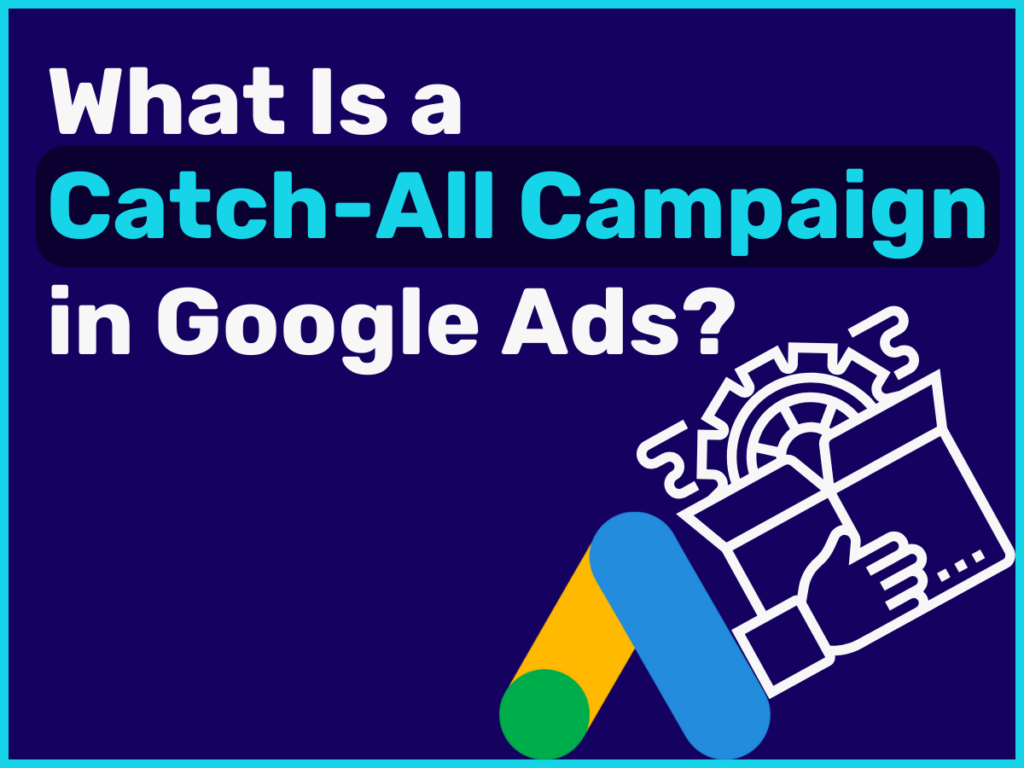
If you run Performance Max or Shopping campaigns, you may have seen the following recommendation:
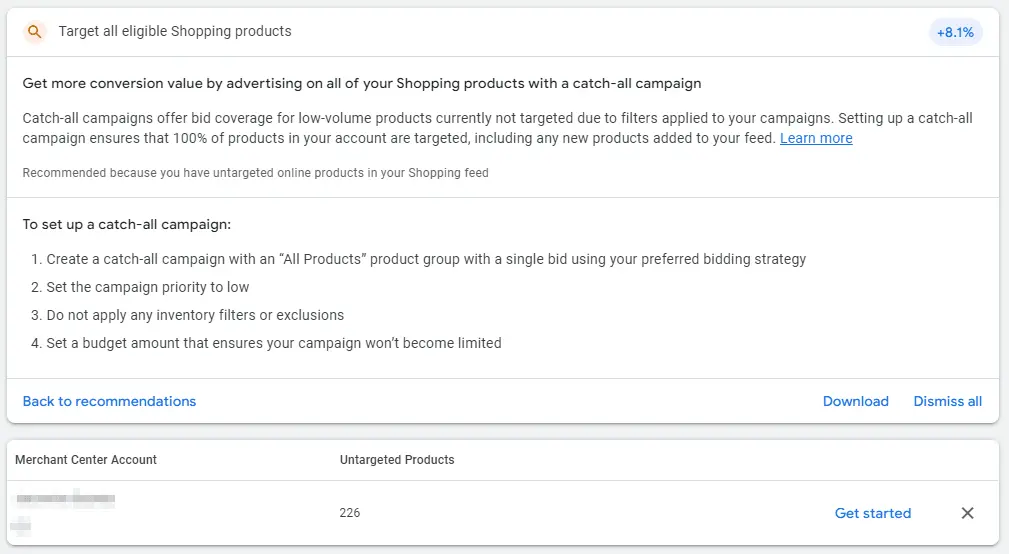
You may have come across the term catch-all campaign before. But what does the term actually mean?
In this post, you will learn everything you need to know about it. I’ll also show you strategies on how you can use this type of campaign for your store.
Here’s a post overview if you’re looking for something specific.
In Google Ads, campaigns are referred to as catch-all if they advertise all available products. This means that there are no restrictions on certain product types, categories or similar.
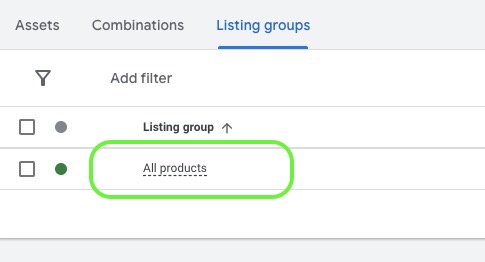
A catch-all campaign can be a Performance Max (PMax) or a standard Shopping campaign. Both campaign types can advertise your products with Shopping Ads.
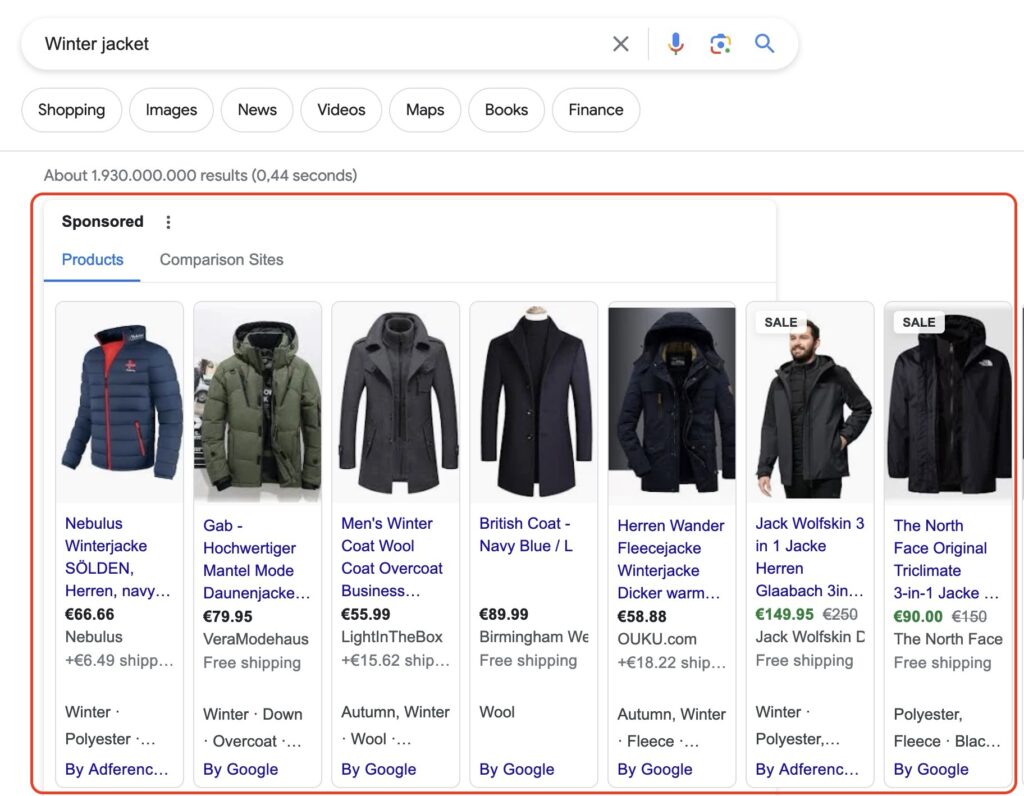
FYI: I’ve already written another post if you want to learn more about the differences between PMax and Standard Shopping campaigns.
If you see the Catch-All recommendation from Google in your account, this is a sign that you are not yet promoting all your available products with Shopping Ads.
And is that a problem? Not necessarily.
If you have deliberately decided to do this because you want to remove some of your products from the promotion, this is not a problem at all. If this is not the case, then the recommendation is a good indication that there are settings such as product filters in your campaigns that restrict some products.
In many cases, promoting all products in the same campaign is not the best choice – especially if it is the only campaign. And why?
Often the different products in an online store are so different (e.g. in price, margin or conversion rate) that it makes more sense to divide the inventory into sub-categories and create a separate campaign for each. Then you can also adapt the budget and bidding strategy to the characteristics of the products.
In a nutshell, a catch-all campaign is not absolutely necessary. Nevertheless, there may be strategies where this type of campaign is very helpful.
As is so often the case, you should not blindly follow the recommendations of Google Ads.
Incidentally, this also applies to the recommendation“Remove redundant keywords” for search campaigns.
The term catch-all actually only stands for covering the entire inventory with a single campaign. There are various approaches and strategies for implementing this in Google Ads.
Below you will find an overview of how you can use catch-all campaigns.
Important: You should not simply adopt any of these tips without being asked. All companies and accounts are different. So test what works for you.
In many cases, a catch-all campaign serves as a supplement to the existing campaign mix. You often have various main campaigns that are segmented according to product categories, margin or product performance, for example.
With this setup, it is not uncommon for many or even the majority of products to be ignored by the campaigns. This can be due to the product filters used or to the peculiarities of the Google algorithm, which tends to focus on a small group of high-performing products.
It often happens that products are sorted out too quickly by the algorithm because they have not sold well seasonally, for example.
A catch-all campaign can be a good addition in this case. The idea is that this campaign should increasingly advertise the products that are not considered by the others.
Tip: As a supplement, the catch-all campaign should of course only be given a small budget (e.g. 10% of the total budget). In addition, I would recommend a higher target ROAS than for the other campaigns.
If you want to run Shopping Ads, it might be a good idea to advertise all products in a single campaign, especially at the beginning of your Google Ads activities. A supplementary search campaign is also recommended.
The idea here is that you take advantage of the peculiarities of the Google Ads algorithm. After all, it’s a good thing that Google focuses on the best products. After your campaign has been running for a while, you will be able to see which of your products are worth advertising and which are not.
Structure is important so that you can easily recognize how your different product groups work. You should therefore divide the campaign into different asset groups (for PMax) or ad groups (for Standard Shopping) based on the product characteristics.
I have explained how to do this for PMax campaigns in this post: Structuring PMax asset groups correctly
In most cases, however, it makes sense to take what you have learned and segment your campaigns further.
If your budget allows, you should use the data to further structure your campaigns.
Unlike Standard Shopping, Performance Max campaigns show not only Shopping ads by default, but also Search, Display or YouTube ads. Typically, you provide the appropriate text, images and videos, or Google creates them automatically.
However, there is also a way to use PMax to show only ads based on your product feed. This way, the campaign will only show shopping and dynamic remarketing ads. The trick is to create a campaign with no assets at all.
If you have ever tried to create an asset group with no assets, you will have noticed that this is not possible in Google Ads. This is because you need to save at least 3 headlines, for example, in order to save the asset group.
The key: Create the campaign via the Google Merchant Center
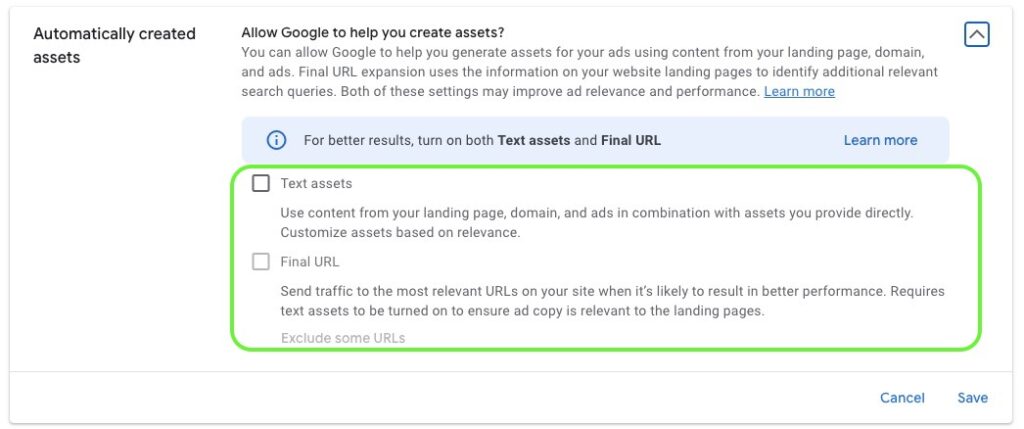
Info: As a feed-only campaign, Performance Max acts similarly to Smart Shopping campaigns (the predecessor of PMax).
If you want this type of campaign back, this is the best way – whether as a supplement or main campaign
Let’s take another look at the advantages and disadvantages of catch-all campaigns so that you can decide whether this campaign type suits your Google Ads strategy.
Simple and straightforward: You simplify campaign management by grouping all products into one campaign. This can save time and resources, especially for companies with large product catalogs.
Data collection: Catch-all campaigns allow you to see which of your products are popular with users. This allows you to identify popular products and optimize less successful products or adjust your strategy.
Complete coverage: A catch-all campaign ensures that all products have the opportunity to be promoted. This can help ensure that you don’t miss out on potential customers looking for products in your range.
Little control: Without product restrictions, you have little control over how your budget is spent or which products end up being promoted.
Same bidding strategy for all products: To advertise your products ideally, the bidding strategy should be adapted to the specifications. For an expensive product with a good margin, the CPA (cost per action) may be higher or the ROAS (return on ad spend) lower than for a cheap product with a tight margin.
With catch-all campaigns, no consideration is given to these characteristics.
Few optimization options: With all products in one campaign, there is little opportunity for optimization. Normally, budgets would be reallocated or products or product groups would be excluded.
I hope I have been able to explain the concept of catch-all campaigns in an understandable way. It is important to understand that in the vast majority of cases it is not a good idea to have a single campaign that promotes all products in the same way.
And if that works for you: Great! But for me, that would also be a sign that you can get even more out of a different campaign structure.
For example, I keep seeing accounts with just a catch-all Performance Max campaign. This may work for a while, but my recommendation is usually clear:
Split campaign (if enough data and budget available)
Search campaigns as a supplement
As a supplement to the campaign mix, a catch-all campaign can be very helpful.
It’s definitely worth testing.
Thanks for reading this post. I hope I could help you.
I wish you every success with your campaigns
Work smart – Clicks in Mind

Hi, my name is Thimo Hofner. I have been working in online marketing as a Google Ads Manager for more than 5 years. Through many courses, trainings and most importantly working with many different clients, I have learned the best strategies for success with Google Ads. On my blog and YouTube, I share my knowledge to help you drive more success with online marketing.